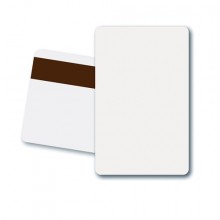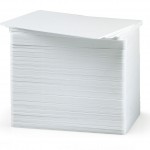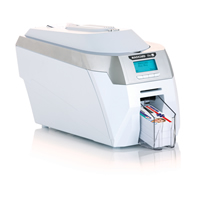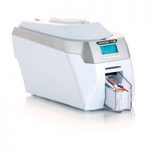We often are asked by clients that are responsible for producing ID cards for their organizations if they should punch required slots in their plastic ID cards prior to printing, or if the printing should be done first.
We recommended that ID cards NOT be punched prior to printing. The act of punching a card-slot leaves a very small raised edge on one side of the card. Though practically invisible, this raised edge can almost always be felt with your finger-tip – making for a potential problem. If the raised edge should come in contact with your device’s print-head during the printing process, the print-head itself can be damaged. If the raised edge is significant enough, it could happen after just a few prints. But even a small and subtle raised-edge can cause problems over time, as card after card contacting the print-head can cause abrasions and scratches. And, as replacement print-heads for most ID card printers cost $500 or more, we strongly recommend that card printing occurs prior to punching the cards’ slots.
Similarly, we also recommend against the use of pre-punched cards. Although the large industrial presses and punches used by card manufacturers are significantly better than light-office versions, they still can leave the same raised edges that can cause irreversible damage. If you MUST use pre-punched or die-cut cards, then we further recommend considering a re-transfer style printer (like the Evolis Avansia or Fargo HDP5000). Due to the method of printing, re-transfer printers are much more tolerant of pre-cut cards than are DTC (direct-to card) printers.
For specific questions regarding your ID card printer system, contact our expert staff toll-free at +1 888.485.4696.

 Magnetic stripe cards are available in two varieties, HiCo and LoCo. So what’s the difference? The difference is simple and as the name states HiCo cards are more coercive, while LoCo cards are less coercive. A higher coerciveness is more secure, but not always a better solution.
Magnetic stripe cards are available in two varieties, HiCo and LoCo. So what’s the difference? The difference is simple and as the name states HiCo cards are more coercive, while LoCo cards are less coercive. A higher coerciveness is more secure, but not always a better solution.



